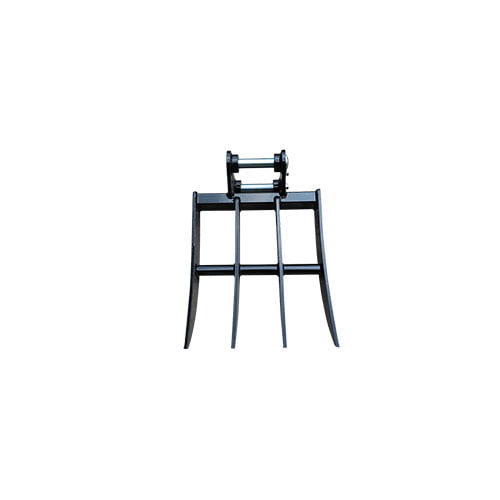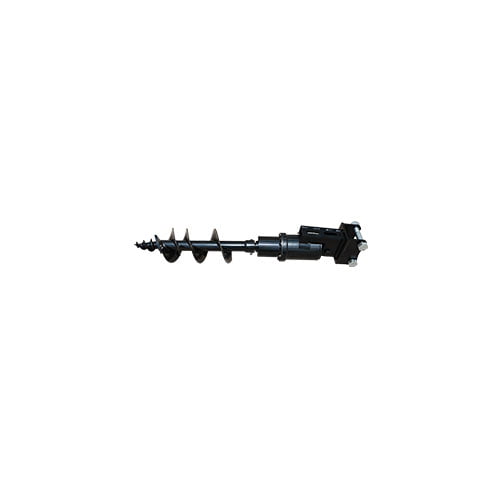Welkom op mijn blog!
Voordat we in de inhoud duiken, zou ik het leuk vinden als je me volgt op mijn sociale mediaplatforms waar ik meer inzichten deel, in contact kom met de community en updates plaats. Dit is hoe je met mij in contact kunt komen:
Facebook: https://www.facebook.com/profile.php?id=100072217509763
LinkedIn: https://www.linkedin.com/company/74949059/admin/dashboard/
YouTube:www.youtube.com/@tractormanufacturer-lc5qz,www.youtube.com/@excavatormanufacturers-sn9hk
TikTok: www.tiktok.com/@tractontwikkelaar, www.tiktok.com/@graafmachinefabrikanten
Laten we nu samen aan onze reis beginnen. Ik hoop dat je de inhoud hier inzichtelijk, boeiend en waardevol vindt.
Inhoudsopgave
Inleiding

An excavator, a powerful piece of construction machinery, can be transformed into a versatile tool with the right attachments. These tools, designed to be attached to the end of an excavator’s arm, can significantly expand the machine’s capabilities. From digging trenches and foundations to demolition and material handling, excavator attachments offer a wide range of applications. In this comprehensive guide, we will delve into the world of excavator attachments, exploring their various types, applications, and how to choose the perfect ones for your specific needs.
Inzicht in Excavator Attachments
Excavator attachments are specialized tools that can be easily attached to and detached from the end of an excavator’s arm. These attachments are hydraulically powered, allowing for precise and efficient operation. By using different attachments, excavators can perform a variety of tasks, making them indispensable in construction, demolition, and other industries.
Veel voorkomende soorten Excavator Attachments
Emmers: The most fundamental and versatile attachment, buckets are used for a wide range of tasks, including digging, loading, and grading. Different types of buckets cater to specific needs:
- Standard Buckets: General-purpose buckets suitable for most digging and loading applications.
- Ditch Cleaning Buckets: Designed for cleaning ditches and canals, these buckets have a specific shape and teeth configuration.
- Rock Buckets: Heavy-duty buckets with reinforced teeth for breaking up and handling rocks.
Hydraulische hamers: Ideal for demolition and breaking up hard materials like concrete, asphalt, and rock, hydraulic hammers deliver powerful blows to shatter and fragment the material. They are essential for tasks such as building demolition, road repair, and mining.
Grijpt: Grapples are used for handling bulky materials like scrap metal, logs, and debris. They consist of two or more tines that can be closed to grip and lift heavy objects. Grapples are commonly used in recycling yards, forestry, and construction sites.
Boren: Augers are used for drilling holes in the ground for various purposes, including planting trees, installing fence posts, and drilling water wells. They are particularly useful in areas with hard or rocky soil.
Rippers: Rippers are heavy-duty attachments designed to break up hard-packed soil, clay, and other dense materials. They are essential for land clearing, road construction, and agricultural applications.
Duimen: Thumbs are additional attachments that can be added to buckets to provide extra gripping power. They are useful for handling irregular or slippery materials, as well as for precise placement of objects.
Shears: Shears are powerful cutting tools used for cutting through metal and other materials. They are commonly used in demolition, scrap metal recycling, and industrial applications.
Factors to Consider When Choosing Excavator Attachments


When selecting excavator attachments, several key factors should be considered:
- The type of work you will be doing: Different attachments are designed for specific tasks. For example, a hydraulic hammer is ideal for demolition, while an auger is best for drilling holes.
- The size and weight of your excavator: The attachment must be compatible with your machine’s hydraulic system and lifting capacity. A larger excavator can handle heavier and more powerful attachments.
- The materials you will be working with: The attachment must be able to handle the hardness and density of the materials you will be encountering. For example, a rock bucket is designed to handle tough, rocky terrain.
- Your budget: Excavator attachments can vary significantly in price, so it’s important to consider your budget when making a purchase.
Benefits of Using Excavator Attachments
- Increased versatility: Excavator attachments allow you to perform a wider range of tasks with a single machine, making it a more efficient and cost-effective investment.
- Improved efficiency: The right attachment can significantly increase your productivity by reducing the time and labor required to complete tasks.
- Reduced labor costs: Attachments can help you complete tasks more quickly and with fewer workers, leading to lower labor costs.
- Enhanced safety: Certain attachments, such as hydraulic hammers and shears, can be dangerous to operate manually. Using an excavator with the appropriate attachment can reduce the risk of accidents and injuries.
Common Excavator Attachments and Their Applications
| Bijlage | Primary Applications |
|---|---|
| Emmer | Digging, loading, grading, trenching |
| Hydraulische hamer | Demolition, breaking concrete, asphalt, and rock |
| Grapple | Handling scrap metal, logs, debris, and other bulky materials |
| Grondboor | Drilling holes for planting, fencing, and water wells |
| Ripper | Breaking up hard-packed soil, clay, and other dense materials |
| Duim | Providing additional gripping power to the bucket |
| Shears | Cutting through metal and other materials |
Hoe kiest u de juiste Excavator Attachment

Choosing the right excavator attachment can be a daunting task. Here are a few tips to help you make an informed decision:
- Assess your specific needs: Identify the primary tasks you need to perform and the types of materials you will be working with.
- Consider your excavator’s capabilities: Ensure that the attachment is compatible with your machine’s hydraulic system and lifting capacity.
- Consult with experts: Seek advice from experienced operators, equipment dealers, or rental companies.
- Research different brands and models: Compare features, performance, and pricing to find the best attachment for your budget and needs.
- Prioritize safety: Choose attachments that are designed with safety features, such as automatic quick-couplers and emergency stop buttons.
Conclusie
By understanding the various types of hulpstukken voor graafmachines and carefully considering your specific needs, you can select the right tools to maximize the versatility and efficiency of your machine. Whether you’re a construction contractor, landscaper, or farmer, investing in the right excavator attachments can significantly improve your productivity and bottom line.
FAQ
What is the most versatile excavator attachment?
The bucket is the most versatile attachment, as it can be used for a wide range of tasks, including digging, loading, and grading.
How do I attach an excavator attachment?
Most attachments are attached using a quick-coupler system, which allows for quick and easy attachment and detachment.
How do I maintain my hulpstukken voor graafmachines?
Regular inspection, cleaning, and lubrication are essential for maintaining the performance and longevity of your attachments. It is also important to follow the manufacturer’s recommended maintenance schedule.




